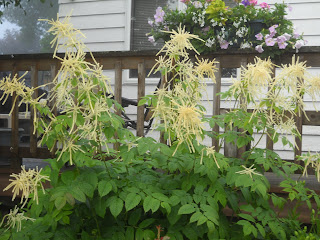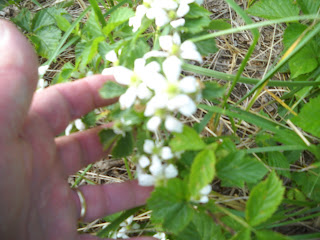 OOPS!
OOPS! ANOTHER FINE DAY
ANOTHER FINE DAY RED-BERRIED ELDER
RED-BERRIED ELDERWednesday, 6:45 AM. 50 degrees, wind E, calm. The sky is clear with some haze. The barometer predicts sunny skies.
I have been telling son-in-law Doug how much fun I was going to have painting the house, and he has been asking me if he could join in the fun too. I finally relented, and am also letting him paint the high parts, as that is the most fun of all.
I described red-berried, or northern, elderberry (Sambucus pubens) when it was in flower some weeks ago. Pictured are its red berries, which are eaten readily by the birds and soon are gone. They have a pleasant (to me) pungent taste, and I would think would be a good flavoring for some meats. Other European and American species are much used in herbal remedies, as leaves and berries are quite astringent, also for food and wine. Elder branches have a very soft pith, that can easily be hollowed out, so they have long been used for whistles, flutes and other wind instruments. Many cultures attribute the elder with magical properties of one kind or another. Native American uses were quite similar. But I find little on the red berried elder, perhaps because it is not as widely distributed as some other species.
We made good progress with the painting yesterday and will continue today, but I don’t want it to become too much of a chore for us.





























































